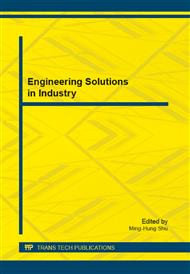p.57
p.61
p.66
p.70
p.79
p.86
p.90
p.96
p.100
A Study of Flexible Force Control Method on Robotic Assembly for Spacecraft
Abstract:
For complex spacecraft assembly conditions, how to play effective and flexible robotic characteristics, and improve production efficiency, is the problem needed to solve.this paper presents a flexible force control method on robotic assembly: a 6-axis force/torque sensor is mounted between tools and the end of robots, the operator operates the load by hands directly, and the system can obtain the force/torque information caused by operator’s hands through gravity compensation algorithm, then the force/torque information is used as input parameters to control the robots moving with the hands. The detailed scheme and algorithms are presented in this paper.
Info:
Periodical:
Pages:
79-85
Citation:
Online since:
October 2014
Authors:
Keywords:
Price:
Сopyright:
© 2014 Trans Tech Publications Ltd. All Rights Reserved
Share:
Citation:


